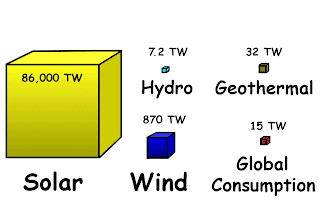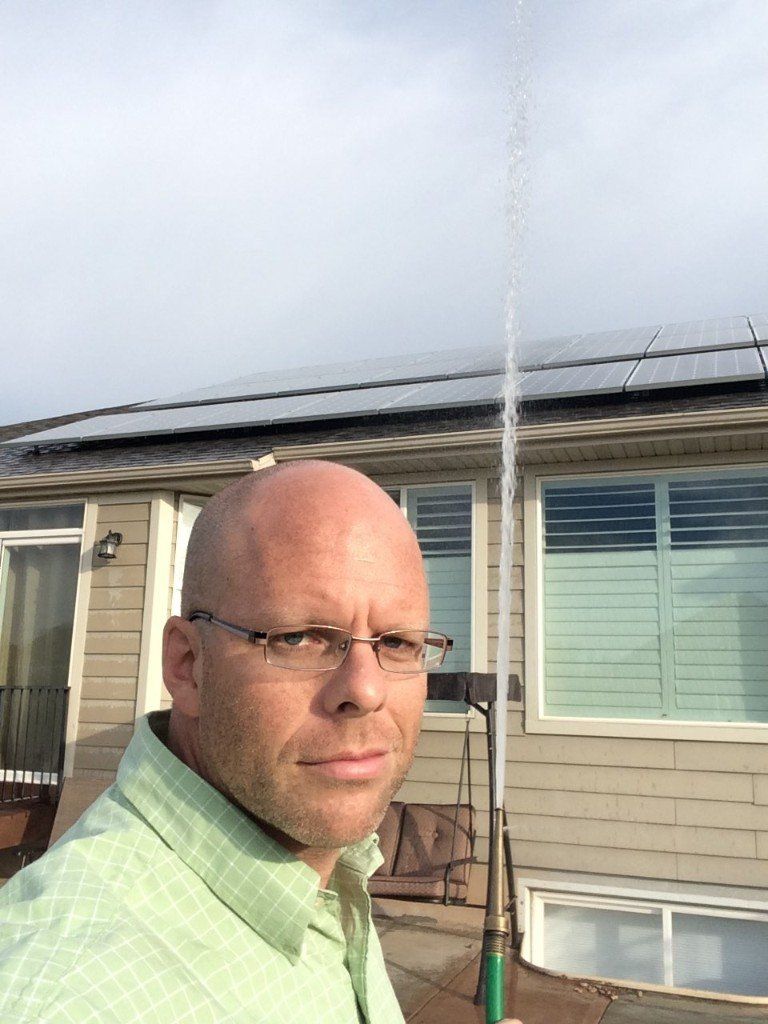Friday, March 18, 2011: Updated August 19, 2014
Myths About Solar Panels
Myth#1:
Solar panels take more energy to produce than they will ever give back in their lifetime.
Let's look at this logically on a cost perspective.
Our Phono-Electric brand Solar panels alone cost ~$16,000 (in 2010). Hypothetically, let's assume the wholesaler and manufactures both made a razor thin profit margin of only 1%, the manufacturer's costs to produce our solar panels would be $15,682. Over their 25 year warrantied lifespan, the panels will produce 285,000 kWh or $28,500 ($4.59 per watt) worth of 10 cents/kWh electricity. If the panels required more energy to produce than what we would get out of them, the manufacturer would have to pay over $28,500 in energy costs just to produce our solar panels. Their energy bill alone would put them out of business before they sold their first panel. The costs of raw materials, labor, chemicals, tooling and equipment would be higher still.

In truth, it only takes 1-3 years for a solar panel to pay back the energy used to make it. Over the life span of a solar panel, it produces 9-19 times the energy it took to make the panel in the first place.
Myth#2:
The manufacturing process of a solar panel produces more pollution than what the solar panel will offset in its entire useful lifetime.
If I may take an excerpt from: http://www.renewablepowernews.com/archives/1281
"When we study the impact on the environment from renewable energy production, we need to assess not just the manufacturing procedures but also the end results to the environment over the long term life of any particular source of energy. Put side by side with traditional energy supplies, like coal and nuclear, the impact to the environment of photovoltaic equipment is rather nominal to nearly nonexistent. PV technologies come out triumphant in the end."
Both coal power plants and solar panel manufacturing plants produce toxic chemicals as a byproduct. Coal power dumps its chemical byproducts (many of them radioactive) directly into the air, whereas solar panel manufacturing reclaims or disposes its waste.
Manufacturing semiconductors is a hazardous process involving dozens of toxic chemicals. Manufacturing a solar cell (which is also a semiconductor) is no different.
Most of these toxic chemicals are very expensive and useful in other related industries as well. Not to say that all businesses are smart but dumping the chemicals out back (instead of recycling or re-selling them) does not make good financial sense.
Here are some statistics I found from the Massachusetts Toxics Use Reduction Act for a company called Evergreen Solar. I added the last column to correlate to my own home solar installation.
Evergreen Solar after producing 312,000 panels in a year

Most of these chemicals are reclaimed since they are still valuable and useful. Very little (except in a few unregulated operations) actually gets out into the environment.
I found a cool pollution calculator at
According to its calculations (for Utah, not US average), before we got our solar panels, The pollution caused by our home's electricity (12,960 kWh/year) consumption alone for 1 year was:
28862 lbs of CO2
27 lbs of Sulfur Dioxide
51 lbs of Nitrogen Oxide
47mg of Mercury
Even if all the waste created by solar panel production wasn't reclaimed (most of it is), the pollution trade-off still happens in less than 3 years. Not to mention a tremendous reduction in CO2 emissions.
No matter how you look at it, photovoltaics come out on top.
Myth #3
Solar Panels Must be constantly cleaned in order to produce power:
Most of the time, the weather will clean your solar panels for you. Other times, it will make them dirty. While you could break out a ladder, climb on the roof and attempt to wash each panel off individually, I prefer the simpler approach.
How to clean solar panels:
1. From the ground, squirt them off with the hose.

Done
